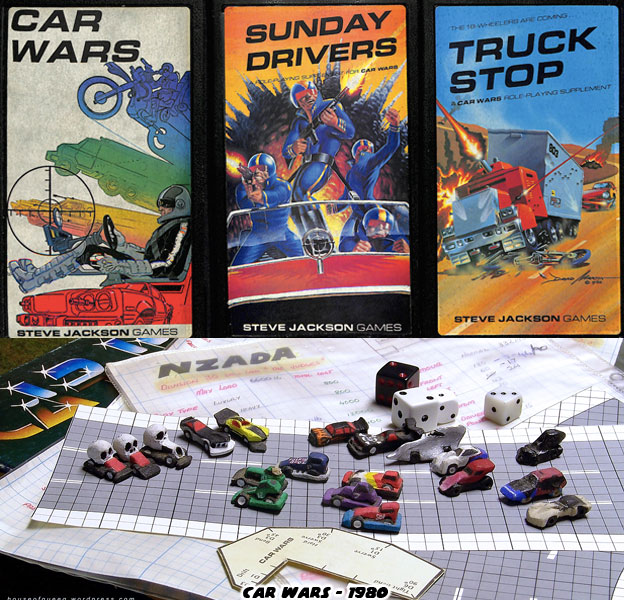
The genius of the Steve Jackson Games was in the designs themselves. Steve was a master of clean design and trusted his audience to fill in the details with their imagination. The majority of his games and components could be printed on paper or cardstock. This kept the prices low and allowed him to sell bundles of games and expansions in small plastic sleeves, no bigger than a deck of playing cards. The audience only needed some dice and a pencil to handle the combat and management system of the games. Car Wars and the reviewed version known as Autoduel would be no different from his other systems. Players could use small tokens to represent their cars or even model some Micro Machines for the job and keep them in the case. Each expansion that Steve developed helped flesh out the world of Car Wars. There were scenarios that could be explored, including the ever popular escort missions. New vehicle types would be added, new weapon rules would be created and there was a solid sense of balance between the heavily armored trucks and the small motorcycles. Best of all Steve would continue to support the system in the pages of Autoduel Quarterly. The small magazine introduced more scenarios, weapon types and vehicles. On the back page there were templates for roads, hazards and obstacles. These could be photocopied and cut out to keep the game fresh. The Steve Jackson Games were among the first to permit some of the content to be copied and distributed. We take it for granted these days thanks to public licenses and internet distribution but this was a revolutionary concept back in the '80s. Since every company was struggling to make a profit it didn't make sense to give away some of your best ideas. That was what made Steve Jackson such a respectable developer and helped spread his games through the community.
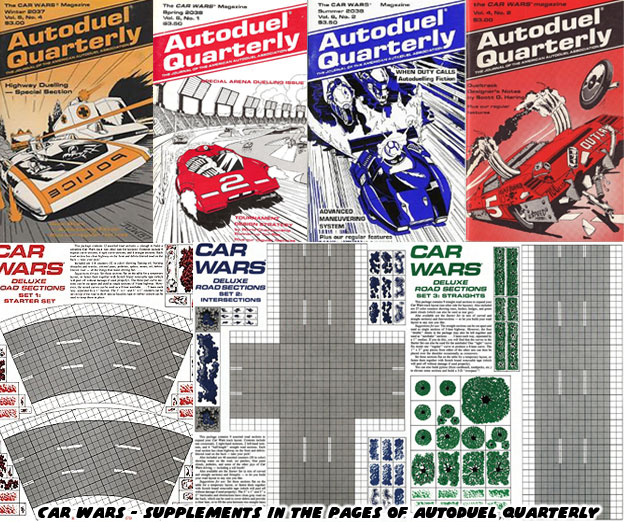
I enjoyed Car Wars for the world that Jackson had created. It was not as bleak as the world of Mad Max or The Road Warrior, the 1979 film and its 1981 successor. The George Miller films were the basis for just about all modern car combat franchises. Instead Car Wars had a sense of futurism. Cars were computer piloted, had engines that ran on diesel, gas, rocket fuel, batteries or hybrid technology. GPS navigation, camera systems and self-healing tires were standard. His team predicted everything that DARPA, Tesla, Google and the other auto manufacturers would dream up 30 years later. The art that was featured in the pages of Autoduel Quarterly were heavily influenced on manga designs. The vehicles were not quite mecha and not quite hot rod cartoon but something in between. There was no doubt that Car Wars set a standard that would be copied by the video game industry.
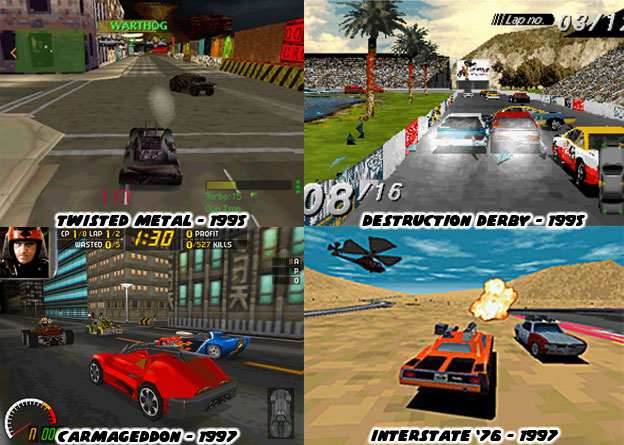
In 1985 Origin Systems released an Autoduel PC game. It was a top-down perspective game that predicted the format that would be used by the original Grand Theft Auto. However it was the vehicle combat games that followed in the '90s that owed a bit more to Steve Jackson than Mad Max. In 1995 the Playstation debuted and solid 3D games on the home consoles were a possibility. SingleTrac released Twisted Metal, it set a new standard for violence and depravity. It had a dark sense of humor too that appealed to the Gen X gamers. That same year Reflections Interactive (which would develop the Driver series) released Destruction Derby. It had impressive vehicle physics and models for the time. A few years later Activision released Interstate '76 and Stainless Games released Carmageddon. Whether the world was retro or futuristic, there was something for every fan of the genre. Cars, guns, crashes and violence was an industry all to itself. The themes explored in each of the titles had been featured in Car Wars many years prior.
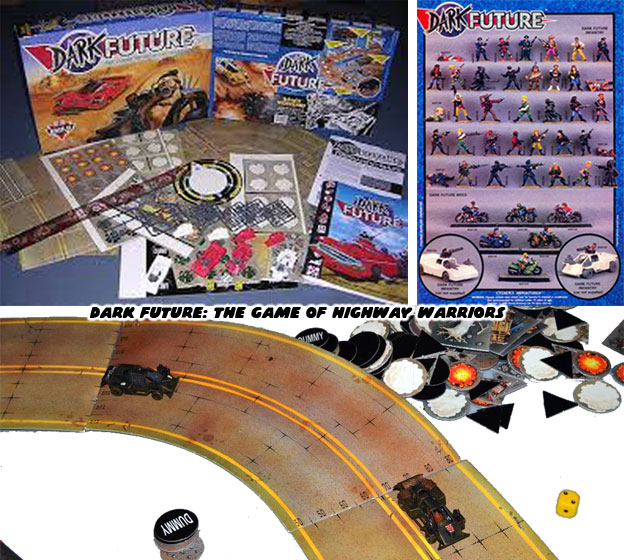
Games Workshop had been following the trends and thought that they could create a superior vehicle combat game. In 1988 they came out with Dark Future: The game of highway warriors. Like the other self-contained games from GW they made sure to include rules, templates and hobby pieces that would help create an unlimited amount of scenarios. It was one of the rare entries from the publisher that was not connected to the Warhammer Fantasy or Warhammer 40,000 timelines. Games Workshop had been paying attention to the elements that made Car Wars work and scaled up the experience. The vehicles and roads in Dark Future were larger than Car Wars, about 1/64 scale or roughly Hot Wheels-sized. The game included rules for certain vehicle types and weapons but where it really set itself apart from any other game was the emphasis on gangs and gang warfare. These were the sorts of collaborative experiences that Games Workshop would revisit in Necromunda.
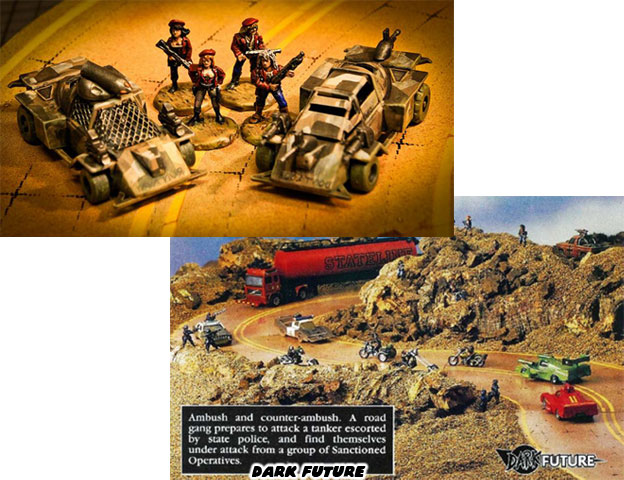
The developer went all in with the system and began supporting it in unique ways. Novels on the Warhammer Fantasy and 40K universes were sporadically released however Dark Future had an entire library of books published shortly after its release. It was as if Games Workshop were trying to catch up to the adventures printed in the pages of Autoduel Quarterly. Fans of the various systems had always wanted to see more stories, comics and graphic novels featuring their favorite characters. Games Workshop did honor the various IP in their magazines and even comic book runs but for some reason Dark Future got a very hard push when it was released. I was certainly surprised with the coverage, hobby tips and articles on all things Dark Future in the pages of White Dwarf magazine.
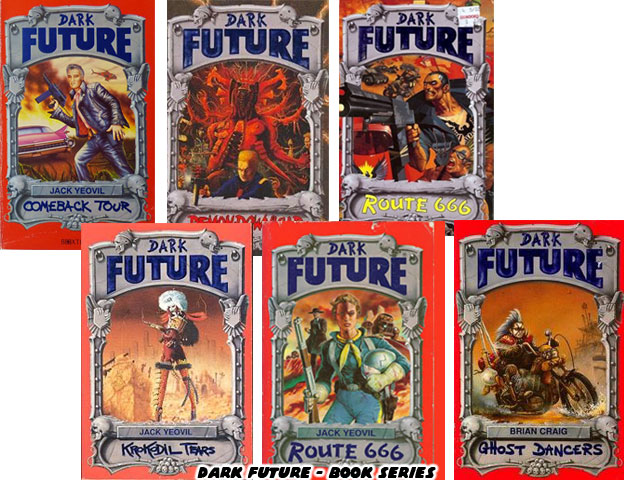
Players were encouraged to develop their own gangs and vehicles for use with the system. In White Dwarf we could see various Hot Wheels and Matchbox toy cars being used as the basis for some amazing conversions. There were police officers, armored corporate goons and rebel alliances featured throughout the various articles. The pages of White Dwarf dedicated to the hobby elements were known as 'eavy Metal. This was of course because miniatures had been cast in lead for years and years. Thankfully when Games Workshop started to go after a more mainstream audience the studio began to focus on plastics. For the more dedicated hobbyists the studio switched to pewter and resin miniatures. The cars in Dark Future were mostly plastic with a few motorcycles being published in plastic.
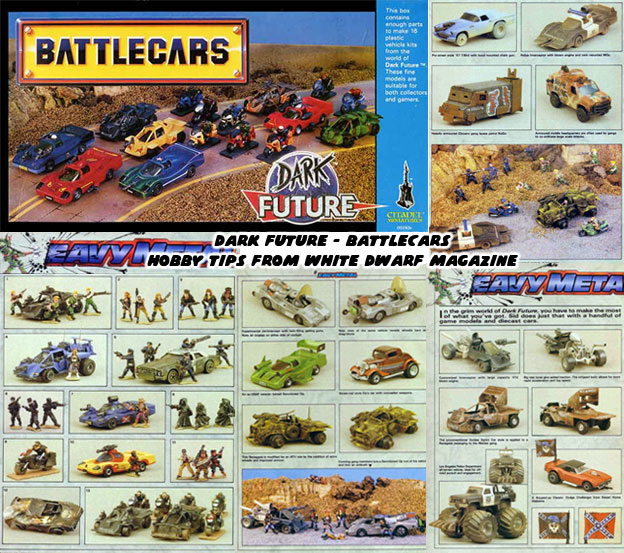
Dark Future did get a sizable following and the system stayed in circulation for a few years. However the popularity of Car Wars remained. At independent game conventions you could still find hobbyists organizing Car Wars tournaments. The best part about the system was how scalable it was. Just because the original system was designed to fit in your pocket it didn't mean that it couldn't work in a larger scale. Hobbyists would build elaborate models for their games and invite new as well as veteran players to see why the system was still fun after 30 years.
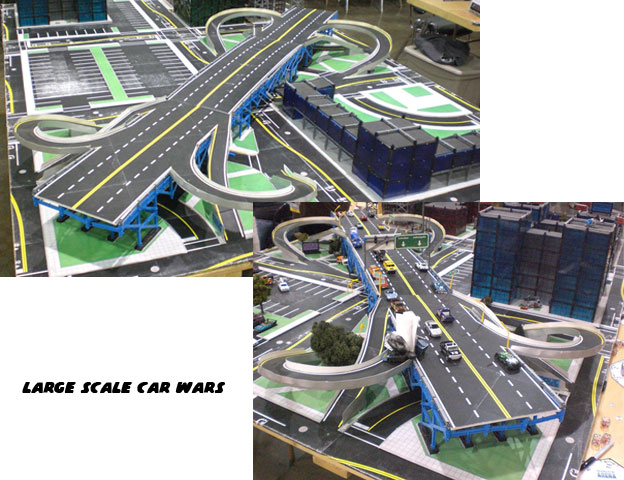
Dark Future was eventually scrapped, along with the other great GW systems like Man 'O War, Battlefleet Gothic and Necromunda. Yet Car Wars remains in publication. You can even find it in the board game section of your local Target!. Steve Jackson Games still offers the original version, now known as Car Wars Classic and a newer version designed for the CCG audience known as Car Wars the Card Game.
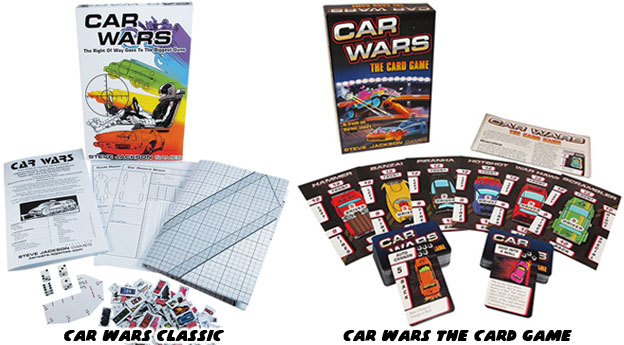
Just like the other games I have been mentioning over these past few weeks, it turned out that Games Workshop was breathing new life into classic systems. It was announced that Dark Future would receive a video game as well. Dark Future: Blood Red States was announced at the end of 2015. It was being developed by Auroch Digital and the details on the game remained hazy. Hopefully there would be enough of the classic system in the new game so that players could see why it was so popular in the late '80s.
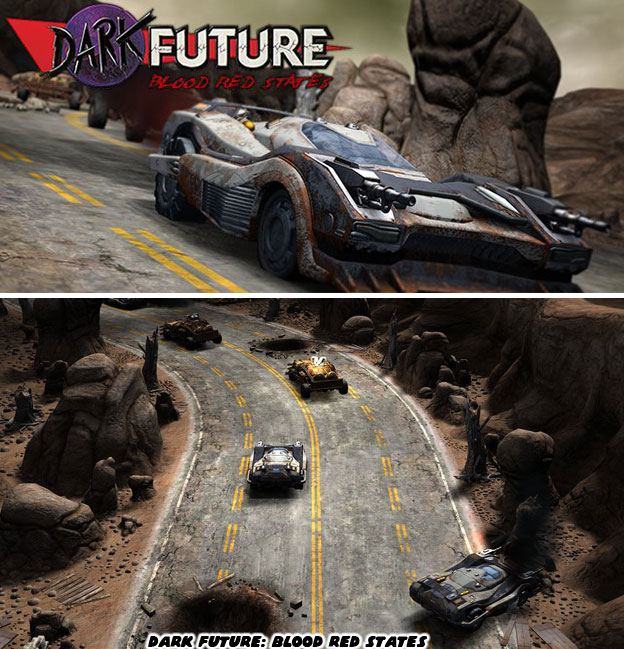
There was a system that Games Workshop developed in the '80s that stayed red hot for more than a decade. Of all the self-contained experiences there was one game which was possibly the most popular and filled with the most potential for a video game adaptation. It was none of the games that I have mentioned so far but it was connected to a part of the established universe of Games Workshop. We'll take a look at this game and the legacy it created on the next blog. Until then I hope you are interested in checking out some classic systems or mobile versions of these great games. As always if you enjoyed this blog and would like to sponsor me please visit my Patreon page and consider donating each month, even as little as $1 would help make better blogs and even podcasts!

No comments:
Post a Comment